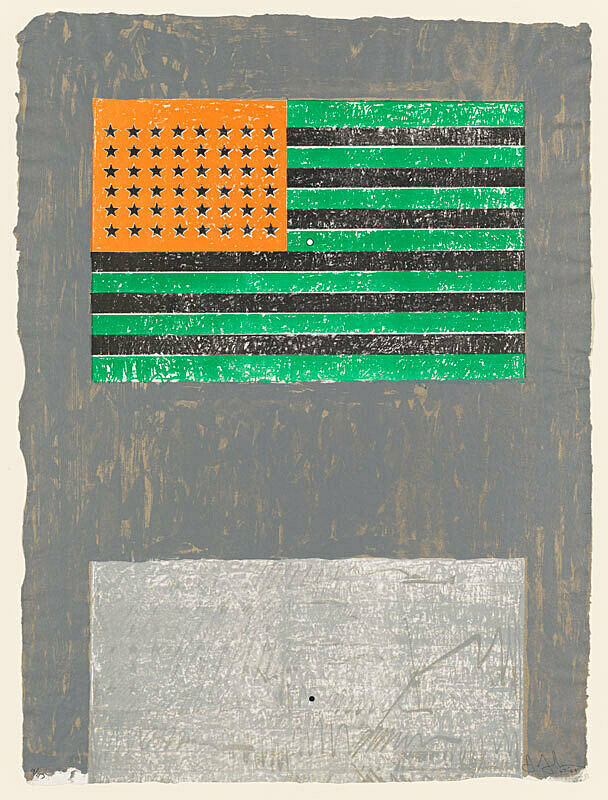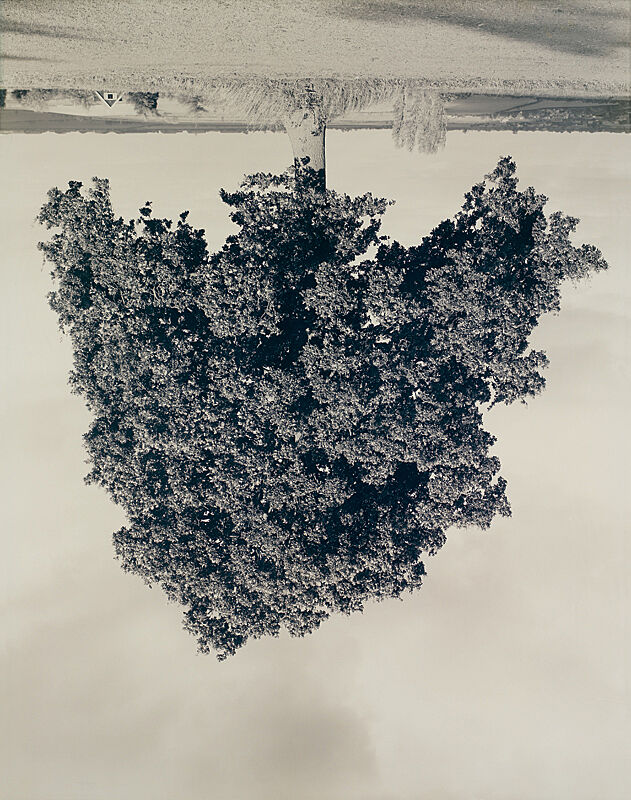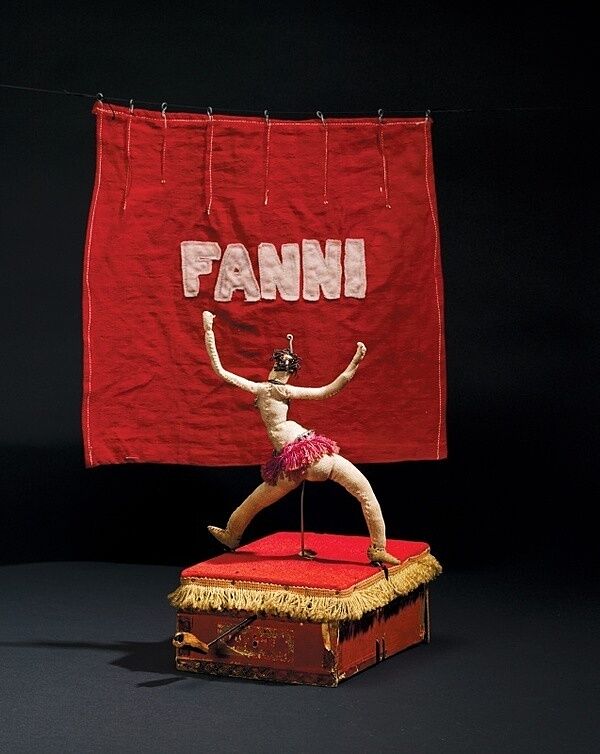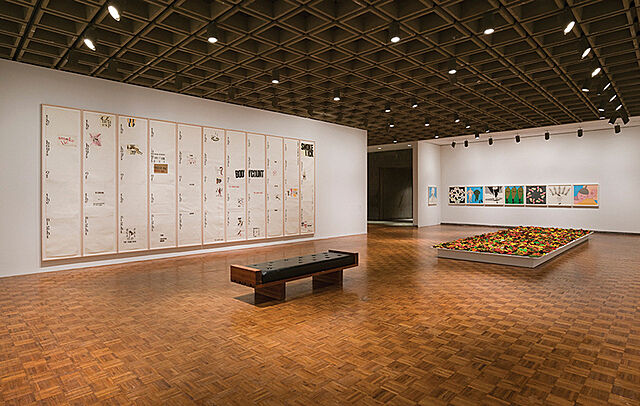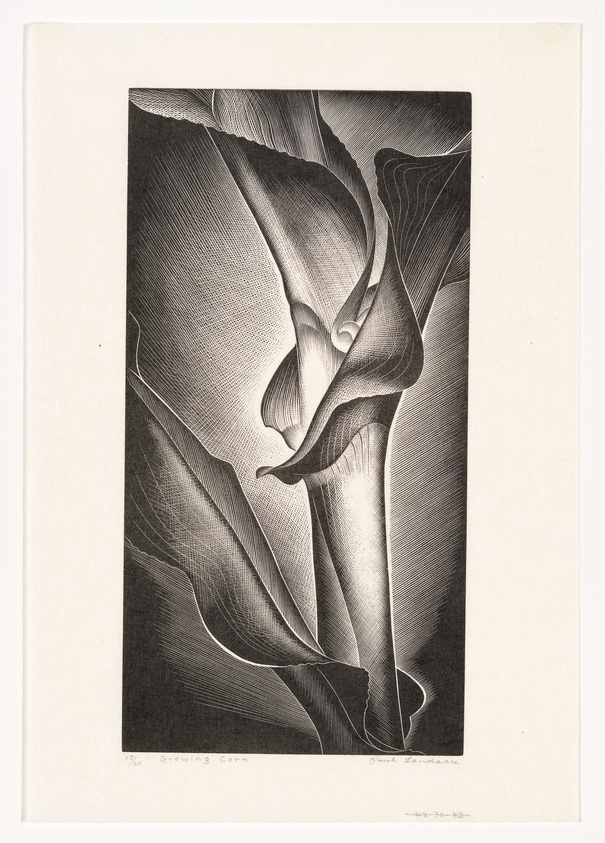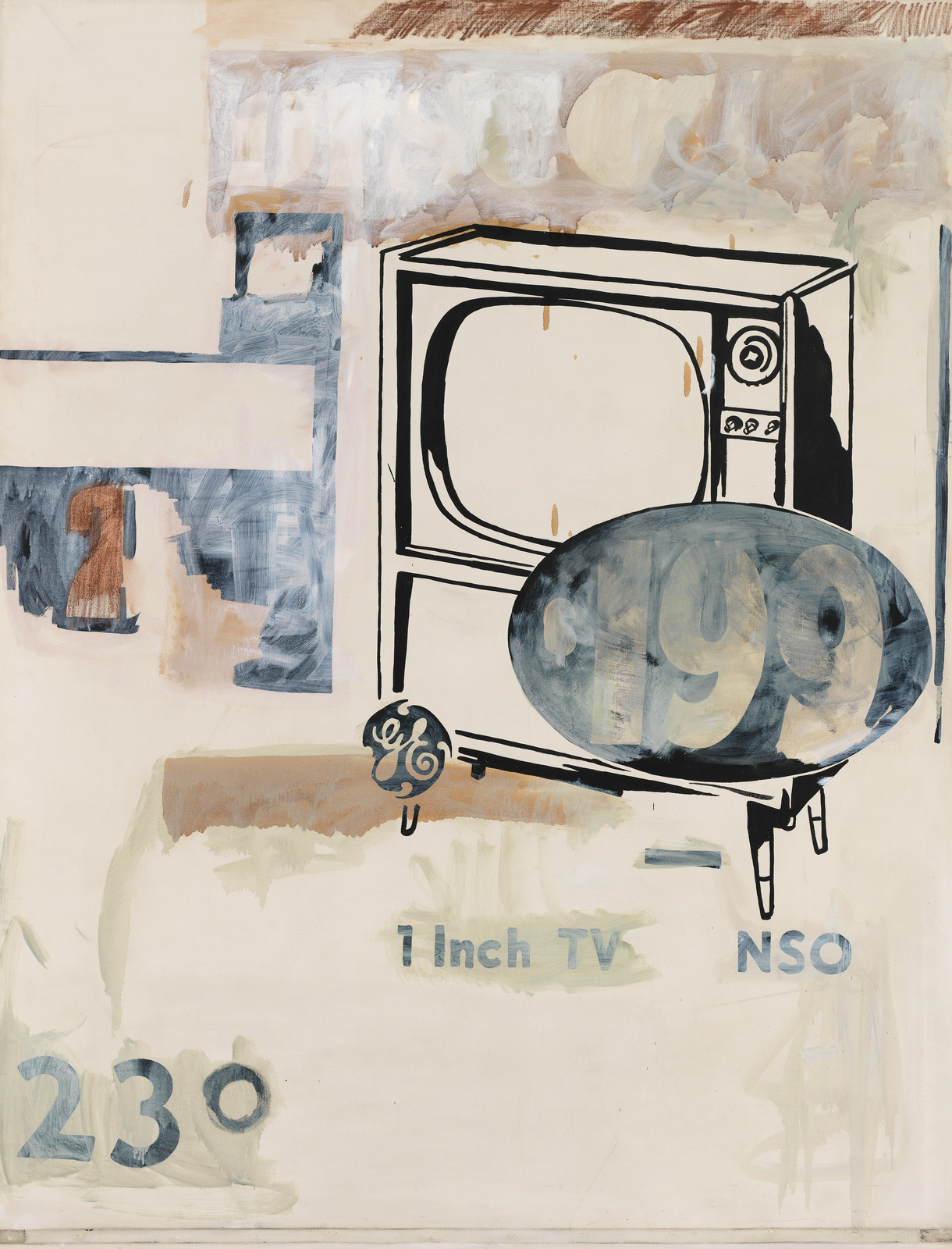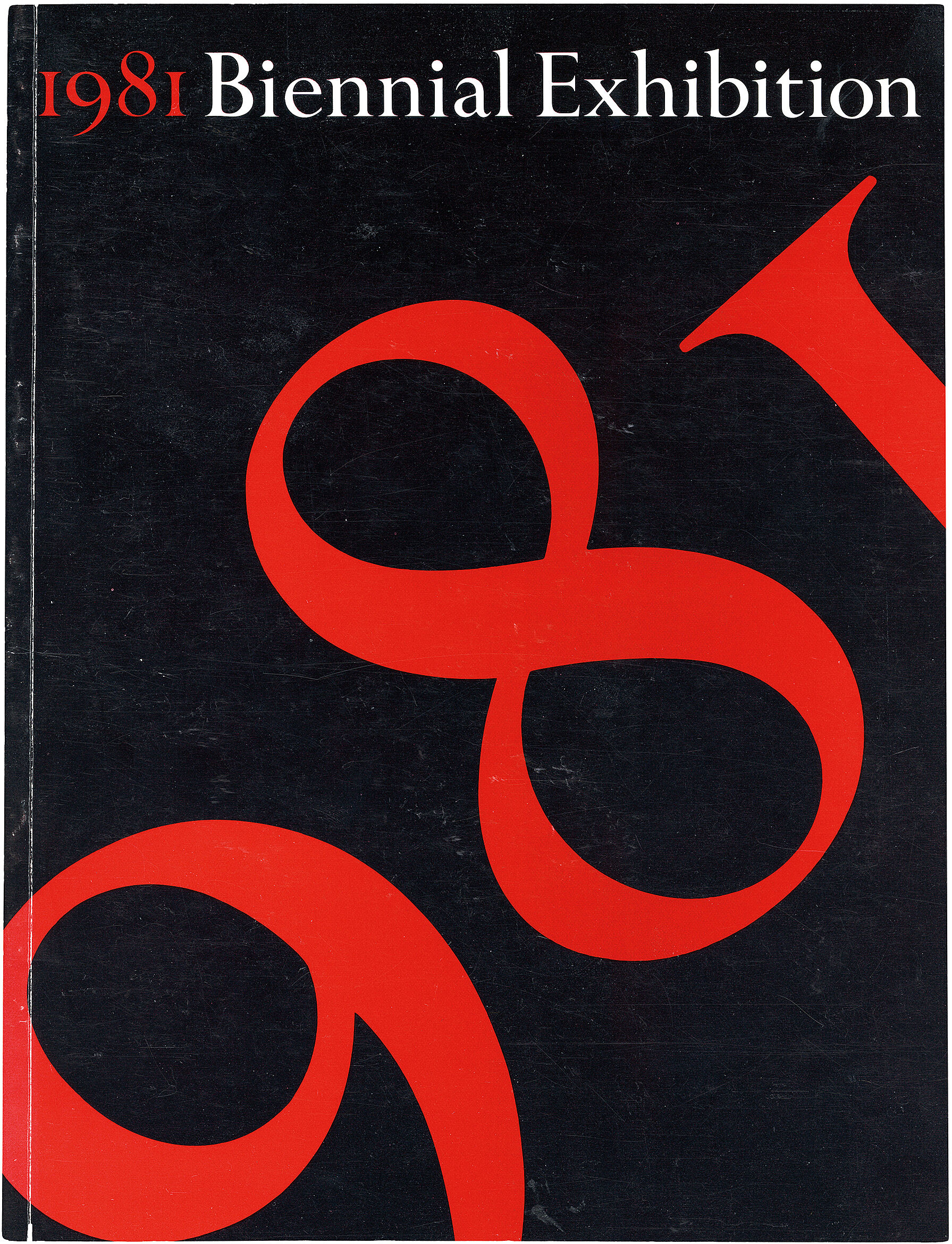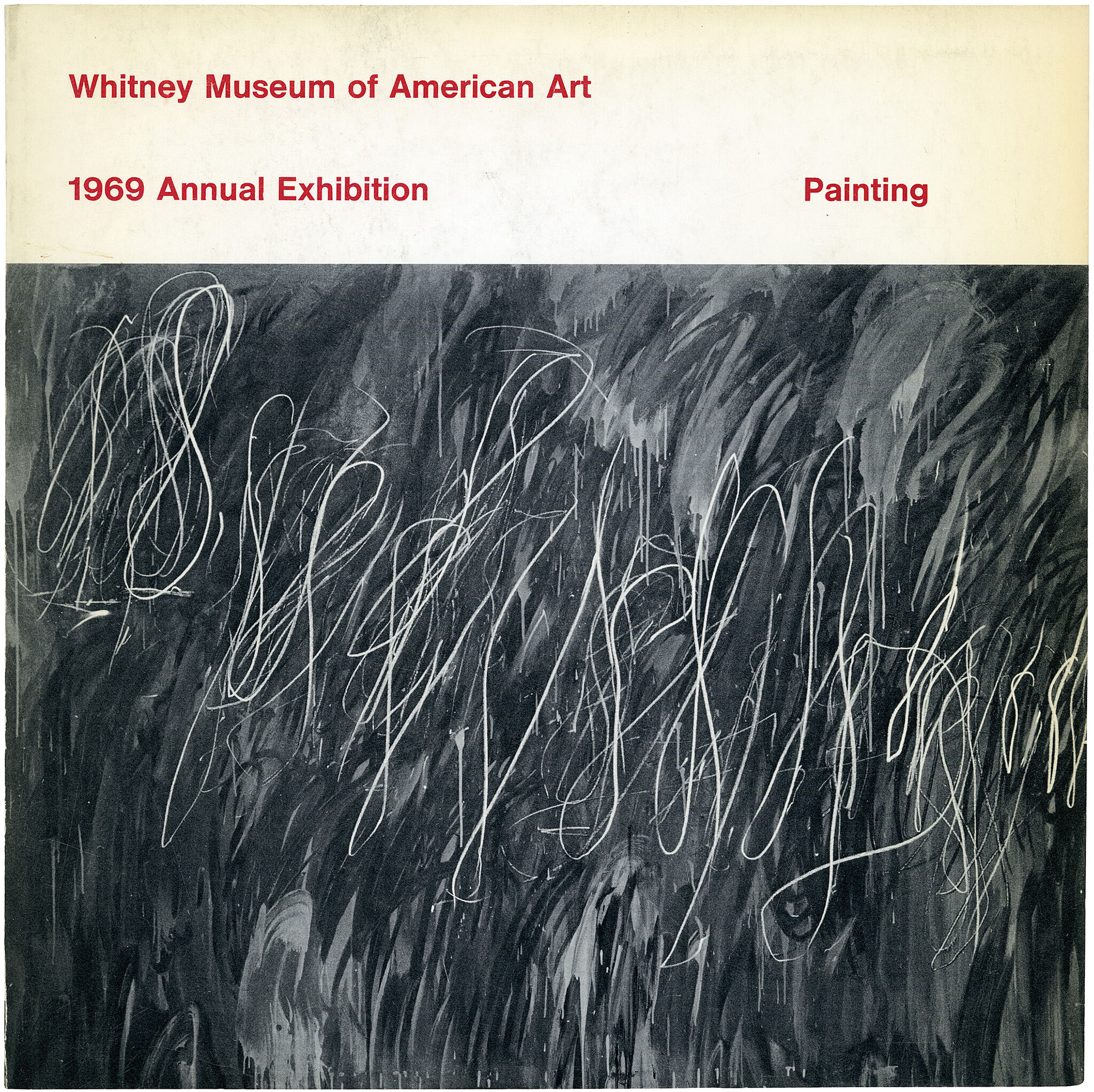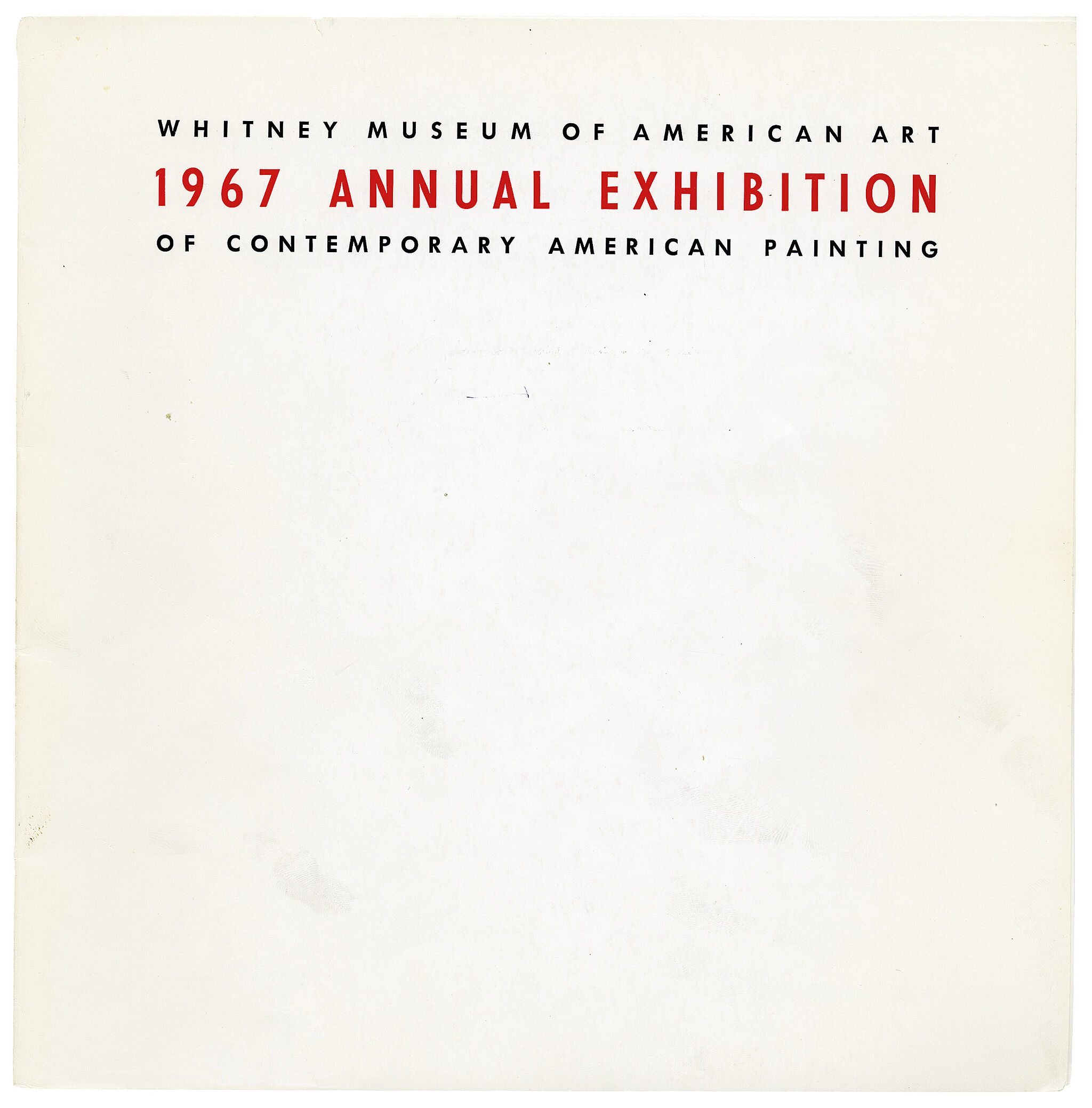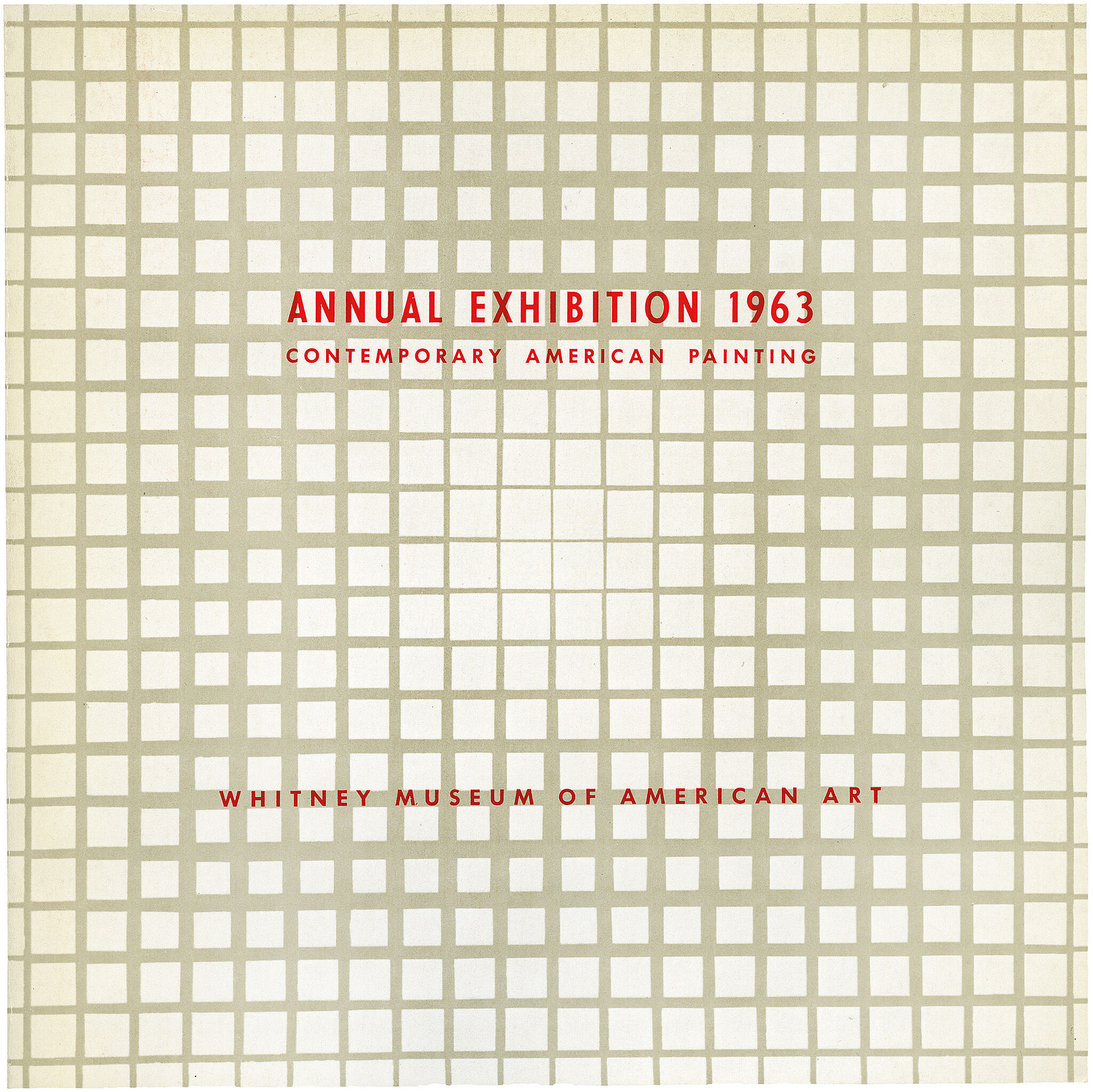James Rosenquist
1933–2017
One of the luminaries of Pop art, James Rosenquist came to painting from commercial art: in the late 1950s he worked as a billboard painter in Times Square and other locations around New York. By 1960 he had committed himself to fine art, imparting the heroic scale, stylized forms, and electric hues of his trade to painting.
Rosenquist’s iconic works, themselves frequently billboard size, often begin as preparatory collages of reproductions from magazines. Alterations in the shift from mass-media source to oil on canvas might include jarring changes in size and scale and the addition of high-key color, rendering Rosenquist’s prosaic subjects—which coalesce, like those of his Pop contemporaries, around domestic, consumerist, and technological themes—strange and startling. The artist’s juxtaposition of disparate images across multiple panels intensifies this effect of defamiliarization, placing a burden on the viewer to distill sense and meaning from the disjunctive pictorial syntax.
In U-Haul-It, Rosenquist conjoins a panel picturing a pocket watch and a pat of butter melting in a frying pan with another depicting a series of car chassis at a factory and a third showing part of the U-Haul logo as it might appear on the side of a moving van. A range of painterly styles—from exacting illusionism to near abstraction—and the use of three different panel sizes accentuates the jumble of images. Rosenquist’s cheerful palette may mask critical implications—a suggested continuum between cozy domesticity and mass production, for example, or the abstracting of corporate logo into gleaming reflection—to say nothing of the note of urgency added by the watch.
Introduction
James Albert Rosenquist (November 29, 1933 – March 31, 2017) was an American artist and one of the proponents of the pop art movement. Drawing from his background working in sign painting, Rosenquist's pieces often explored the role of advertising and consumer culture in art and society, utilizing techniques he learned making commercial art to depict popular cultural icons and mundane everyday objects. While his works have often been compared to those from other key figures of the pop art movement, such as Andy Warhol and Roy Lichtenstein, Rosenquist's pieces were unique in the way that they often employed elements of surrealism using fragments of advertisements and cultural imagery to emphasize the overwhelming nature of ads. He was a 2001 inductee into the Florida Artists Hall of Fame.
Wikidata identifier
Q448845
Information from Wikipedia, made available under the Creative Commons Attribution-ShareAlike License . Accessed November 22, 2025.
Introduction
Pop artist whose work was strongly influenced by his years as a billboard painter (1955-1958). In his signature style on large canvases, Rosenquist would juxtapose imagery taken from advertisements, magazines, and pop culture as a whole.
Country of birth
United States
Roles
Artist, painter, photographer, sculptor
ULAN identifier
500021855
Names
James Rosenquist, James Albert Rosenquist
Information from the Getty Research Institute's Union List of Artist Names ® (ULAN), made available under the ODC Attribution License. Accessed November 22, 2025.




